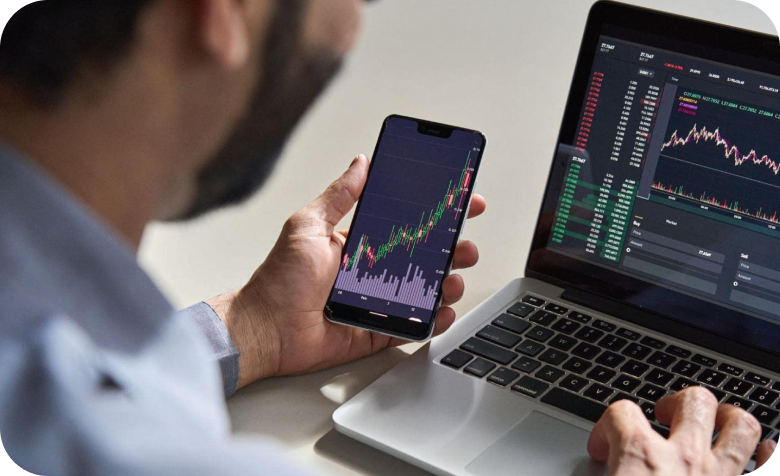- Formazione
- Analisi Tecnica
- Indicatori Tecnici
- Oscillatori
- Williams Percent Range
Williams Percent Range
Come si utilizza
L'obiettivo principale del Williams Percent Range è quello di identificare le aree di ipercomprato e ipervenduto:
- Se l'indicatore si trova al di sopra di -20, la situazione è di ipercomprato;
- Se l'indicatore è al di sotto di -80, avremo una situazione di ipervenduto.
L'uscita dalle aree di ipercomprato/ipervenduto potrebbe essere un segnale di inversione:
- Si genera un segnale di vendita quando l'oscillatore taglia il limite dell'area di ipercomprato dall'alto;
- Si genera un segnale di acquisto quando l'oscillatore taglia il limite dell'area di impreveduto dal basso.
I modelli di divergenza sono rari, ma possono indicare un possibile indebolimento del trend:
- Se il prezzo segna un nuovo massimo, mentre l'indicatore non lo fa, si ha un segnale di indebolimento del trend al rialzo;
- Se il prezzo segna un nuovo minimo, mentre l'indicatore non lo fa, si ha un segnale di indebolimento del trend al ribasso.

Indicatore Williams Percent Range
Strategia di Trading
L'indicatore %r, come già detto, aiuta a determinare i momenti in cui il mercato si trova in condizione di ipervenduto o ipercomprato. Le regole di trading della strategia %R sono semplici: comprare quando il mercato si trova in zona di ipervenduto (%R raggiunge -80% o inferiore) e vendere quando il mercato si trova in zona di ipercomprato (%R raggiunge -20% o superiore).
Calcolo
R% = - ((H - C)/(H – L)) x 100; dove: C – prezzo di chiusura odierno; L – minimo degli ultimi n giorni; H – massimo degli ultimi n giorni.
Come creare Williams Percent Range sulla piattaforma di trading
Forex Indicators FAQ
What is a Forex Indicator?
Forex technical analysis indicators are regularly used by traders to predict price movements in the Foreign Exchange market and thus increase the likelihood of making money in the Forex market. Forex indicators actually take into account the price and volume of a particular trading instrument for further market forecasting.
What are the Best Technical Indicators?
Technical analysis, which is often included in various trading strategies, cannot be considered separately from technical indicators. Some indicators are rarely used, while others are almost irreplaceable for many traders. We highlighted 5 the most popular technical analysis indicators: Moving average (MA), Exponential moving average (EMA), Stochastic oscillator, Bollinger bands, Moving average convergence divergence (MACD).
How to Use Technical Indicators?
Trading strategies usually require multiple technical analysis indicators to increase forecast accuracy. Lagging technical indicators show past trends, while leading indicators predict upcoming moves. When selecting trading indicators, also consider different types of charting tools, such as volume, momentum, volatility and trend indicators.
Do Indicators Work in Forex?
There are 2 types of indicators: lagging and leading. Lagging indicators base on past movements and market reversals, and are more effective when markets are trending strongly. Leading indicators try to predict the price moves and reversals in the future, they are used commonly in range trading, and since they produce many false signals, they are not suitable for trend trading.
Utilizza indicatori dopo aver scaricato una delle piattaforme di trading, offerte da IFC Markets.
Ampia Scelta di Piattaforme di Trading per Tutti i Dispositivi

Not sure about your Forex skills level?
Take a Test and We Will Help You With The Rest


